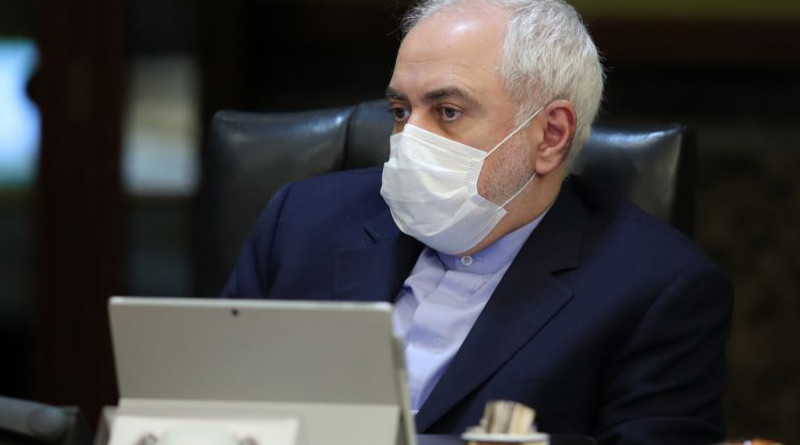Iran Is Re-Opening Its Economy For Same Reason It Initially Ignored Coronavirus – OpEd
By Hamid Enayat
Iran is suffering from what may be the worst coronavirus outbreak in the world. Official estimates place the total number of cases at more than 70,000, with over 4,000 deaths. But credible sources suggest that this is a dramatic under-estimate and that government mismanagement is primarily responsible for the situation being what it is. If that is even partially true, it is all but certain that the aftermath of this crisis will include renewed public unrest, perhaps on the scale of the November 2019 uprising that left 1,500 activists dead.
Tehran is well aware of this possibility. For the mullahs, the main question at this point is, “What course of action will forestall public protests the most while making them least effective?” And at this moment, the answer appears to be, “Sending Iranians back to work to face an increased threat of exposure to the disease that has killed thousands of their countrymen.”
That is precisely the course of action that Tehran initiated on Saturday, following a decidedly brief interruption in regular commercial and social activities. Authorities had urged Iranian citizens to avoid traveling during the Nowruz holiday that began on March 21 and ended on April 4. And after that, the country found itself in a nationwide lockdown, with private retailers barred from operating while government offices remained closed.
This was the full extent of the Iranian government’s response to the covid-19 threat. The social distancing measures were miniscule in comparison to those undertaken by other countries of the region, all of which experienced much more manageable outbreaks than Iran’s. More serious measures in Iran would have required either substantial investments by Tehran or certain trade-offs that the regime was not willing to make.
Coronavirus reached the Islamic Republic at a very inconvenient time for the regime. Documents obtained by the National Council of Resistance of Iran have revealed that the first domestic cases of covid-19 were recognized no later than the end of January. Not only was the previous November’s uprising still a fresh memory, but students and civil activists across more than a dozen provinces had only just finished protesting the regime’s attempted cover-up of a missile strike that brought down a Ukraine International Airlines flight, killing everyone on board.
Supreme Leader Ali Khamenei blamed the demonstrations, like those of December 2017 and January 2018, on the People’s Mojahedin Organization of Iran, MEK.
Since that uprising and especially since its sequel late last year, the regime has been living in terror of another flare up of public demands for regime change.
The fear of anti-government sentiment also explains the lack of an initial response to the coronavirus outbreak. Although the first cases were admitted to hospitals in late January, the regime made no public statements about coronavirus until late February. The three-week delay was clearly motivated by a persistent obsession with countering the message of pro-democracy protests. One of the best opportunities for doing so arrives every February with the anniversary of the Iranian revolution.
This year, it was more important than ever for authorities to carefully stage-manage the public commemoration of that anniversary, coming in the wake of the November uprising, the January student protests, and the US drone strike that killed Iran’s top general, Qassem Soleimani. Tehran was eager to portray Iranians as being outraged by his death, especially after the student protests led to incidents in which posters and memorials to the former leader of the IRGC Quds Force were deliberately destroyed.
Toward that end, authorities made attendance at anniversary parades mandatory for government employees and covered travel expenses for residents of rural towns who agreed to travel to Tehran and appear before state television cameras. The scheme surely exposed countless Iranians to infection by a deadly virus that had already reached the country but had not yet been disclosed to the public.
The regime doubled down on this disregard for public health shortly thereafter, when it urged voters to go to the polls for parliamentary elections on February 21. Supreme Leader Khamenei said that Iranians were religiously obliged to vote and show their support for the clerical regime.
Saturday marked the first instance of the regime asking its people to brave coronavirus in full awareness of the inherent risk. And many people will do it simply because they have no choice. Although Iranian authorities possess ample private wealth and President Hassan Rouhani has acknowledged that sanctions pose no obstacle to the fight against coronavirus, the regime has provided virtually no economic support to the public.
Had the regime continued to withhold that support while keeping people home to avoid covid-19, the resulting unrest would have been swift and furious. Sending them back to work will not prevent that unrest altogether. And when the human cost of doing so becomes clear, the demand for regime change will surely intensify. But it will take longer for the public to regroup in the wake of that tragedy, and by hoarding the money it might have spent on alleviating the people’s suffering, the regime will be in a better position to put down the next uprising.

